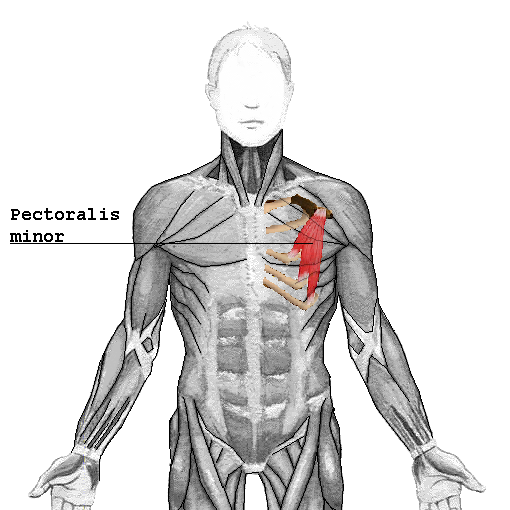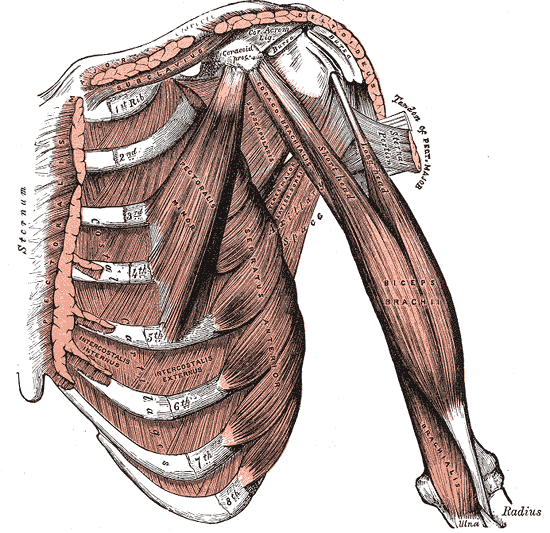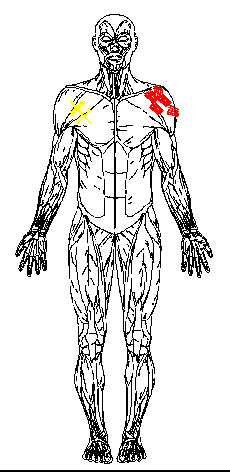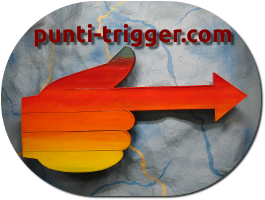The Pectoralis Minor is one of those muscles that all too often are ignored during a massage session.
Anatomy
The Pectoralis Minor lies under the Pectoralis Major, but it differs from the latter both in regard to the direction of its fibers and in regard to the insertion points. Therefore, the function of the Pectoralis Minor is different from that of the Pectoralis Major.
The muscle attaches to the Coracoid Process, a bony beak-like landmark of the Scapula, which can be easily palpated just below the lateral end of the Clavicle. It then separates into three or more sections and attaches to three or sometimes more ribs, which generally are the 3rd, 4th and 5th rib.

Functions
The Pectoralis Minor is a muscle that helps forced breathing. It also stabilizes the Scapula during several movements and efforts of the arm.
Symptoms
The main symptom from trigger points in the Pectoralis Minor is pain on the frontal aspect of the shoulder. However, in more serious cases, the pain can extend both medially toward the chest, and along the ulnar or internal side of the arm and forearm, all the way to the last three fingers. Especially when the pain is on the left side, fears of cardiac problems may arise.
Another possible symptom can be due to the compression of the Axillary Artery and of the Brachial nerves, with resulting weakening of the arm and neurological problems. Note that these symptoms overlap those from Scalene trigger points, and therefore the two muscles should always be treated together.
Finally, a further issue arising from Pectoralis Minor trigger points can arise from the involvement of its antagonist muscles. A tight Pectoralis Minor pulls the shoulder forward and downward, and as a consequence the external rotator muscles have to do constant work to bring the shoulder back to a neutral position. In time, the external rotators develop trigger points as well, the end result being that the whole shoulder is compromised in a complex fashion.

Perpetuating Factors
Among the causes of Pectoralis Minor trigger points are hyperventilation and incorrect, superficial breathing patterns that involve lifting the upper rib cage rather than employing the Diaphragm. Another factor can be the overuse of the muscle from exercises such as bench presses and pushups while neglecting to develop the antagonist, balancing muscles such as Posterior Deltois, Teres Minor, Infraspinatus.

Treatment
In order to locate the muscle, one can bring the hand behind the back and push against the wall while the opposite hand palpates the area below the Coracoid Process. In this way the Pectoralis Minor contracts but the overlying Pectoralis Major does not get called into action.
The treatment consists of deep focalized massage of the trigger points, which can be found along the entire muscle, because the muscle itsef branches into severa sections and each section can harbor its own trigger points.
As a complementary practice, a good stretch can be obtained by bending the elbow and resting the inner forearm against a door frame, and then slowly rotating the trunk in the opposite direction.
